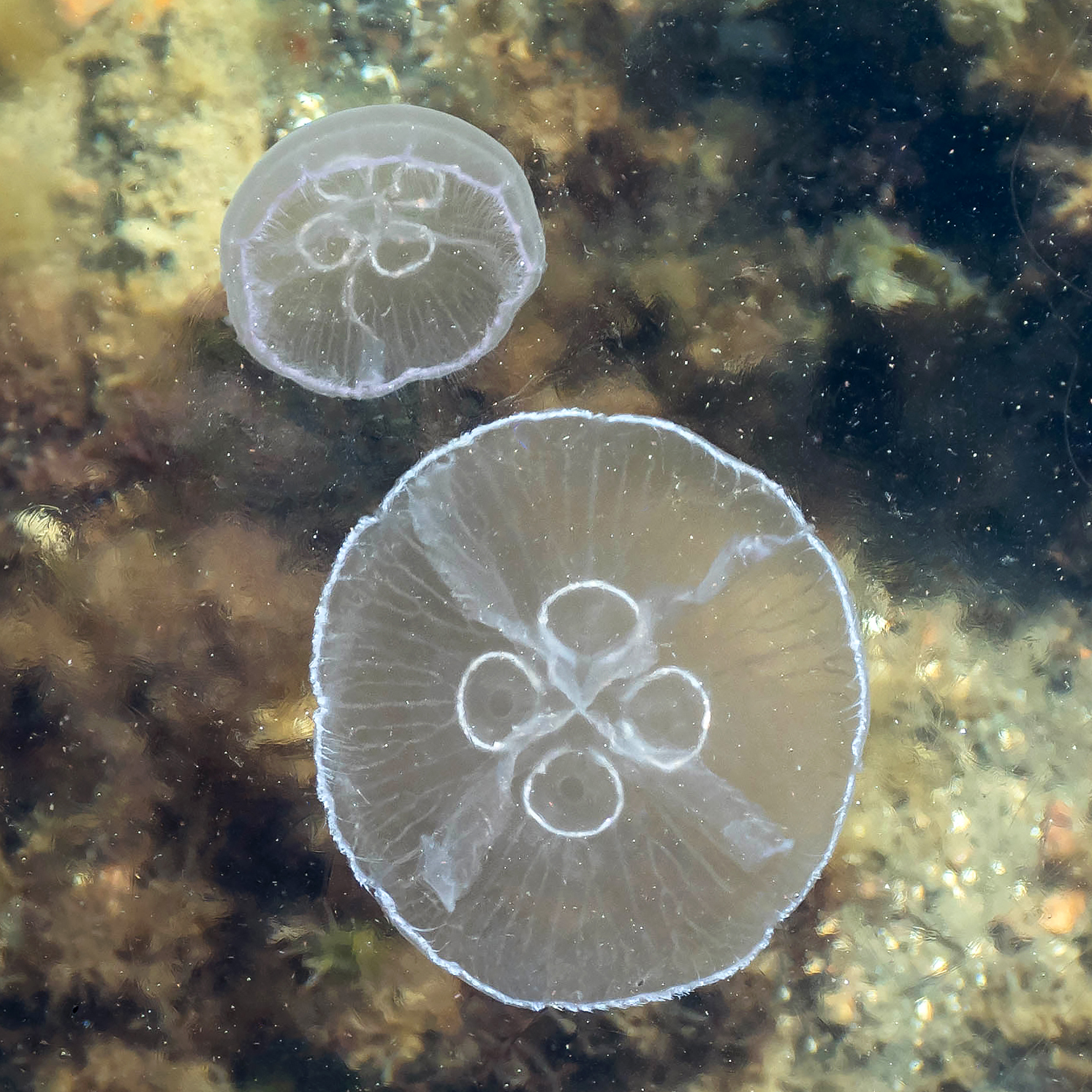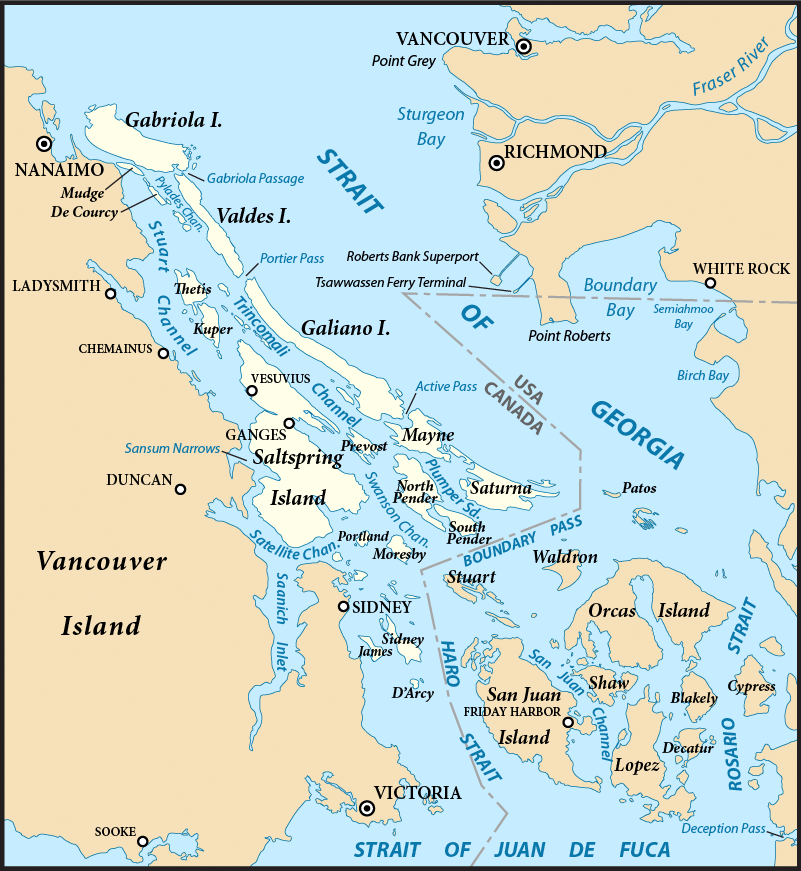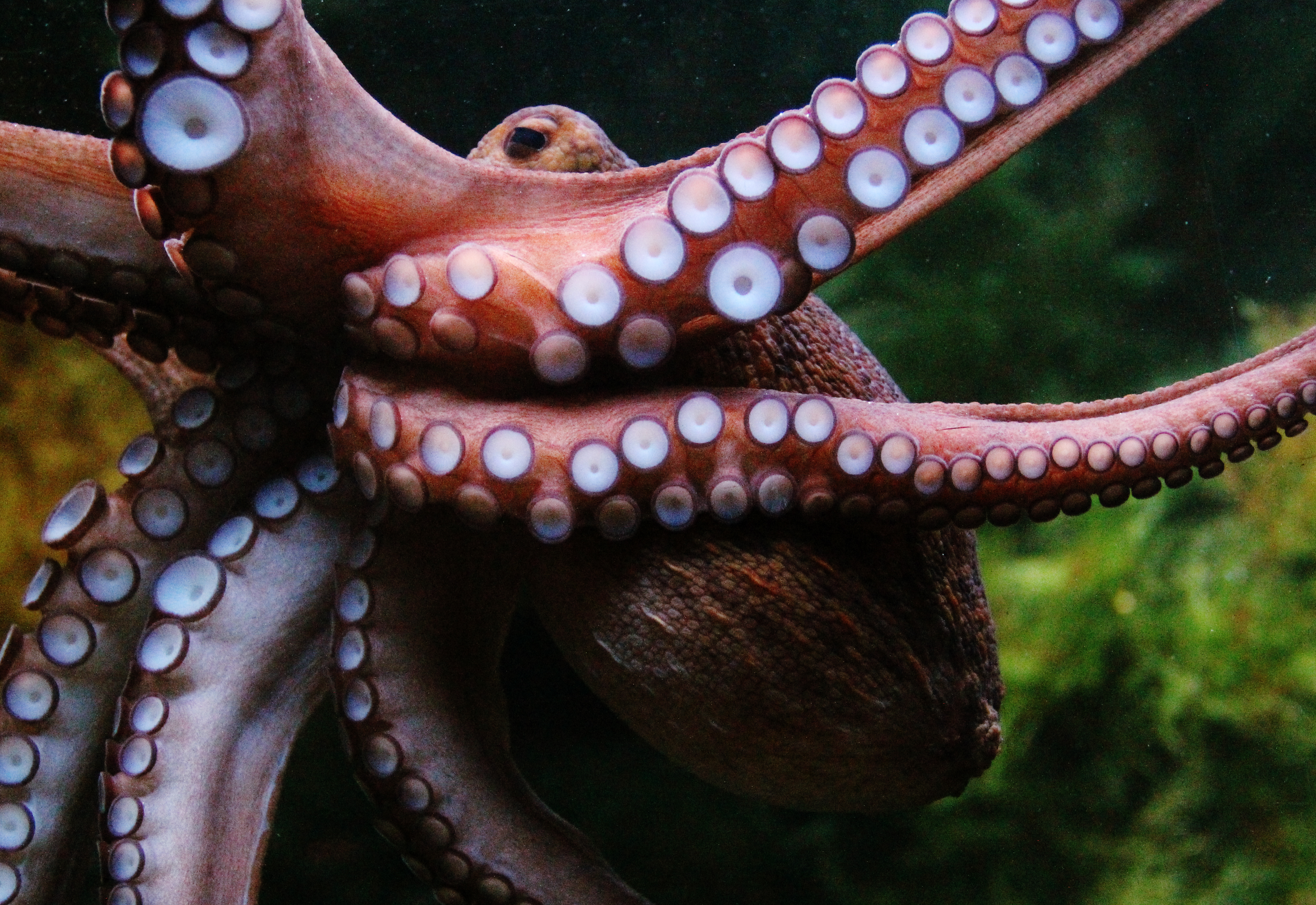|
Shaw Centre For The Salish Sea
The Shaw Centre for the Salish Sea (formerly Shaw Ocean Discovery Centre) is a not-for-profit aquarium and cultural learning centre that focuses on the ecosystem of the Salish Sea and is located in the Sidney Pier Building on the waterfront in the Vancouver Island town of Sidney, Canada, in the Greater Victoria region. Since its grand opening on June 20, 2009, the Shaw Centre for the Salish Sea has become a highly regarded environmental education centre, as well as a popular attraction frequented by tourists and locals alike. The centre has won numerous awards including being named "One of Canada's Top Ten New Attractions" for summer 2009 by ''Where'' magazine. History The development of the Shaw Centre for the Salish Sea started in 2004, when the Town of Sidney approved the development proposal by the Marker Group to build the Sidney Pier Hotel and condominium project on a waterfront site overlooking the Salish Sea. The construction of the Sidney Pier Building was approved by ... [...More Info...] [...Related Items...] OR: [Wikipedia] [Google] [Baidu] |
Sidney, British Columbia
Sidney is a town located at the northern end of the Saanich Peninsula, on Vancouver Island in the Canadian province of British Columbia. It's 1 of the 13 Greater Victoria municipalities. It has a population of approximately 11,583. Sidney is located just east of Victoria International Airport, and about south of BC Ferries' Swartz Bay Terminal. The town is also the only Canadian port-of-call in the Washington State Ferries system, with ferries running from Sidney to the San Juan Islands and Anacortes. Sidney is located along Highway 17, which bisects the town from north to south. It is generally considered part of the Victoria metropolitan area. The town west of Highway 17 (also called Patricia Bay Highway, locally abbreviated as the Pat Bay Highway) has a mixture of single-family residences and light industry. The majority of the town is located east of Highway 17. Single-family units are also present east of the highway, but the eastern sector also has many condominium-ty ... [...More Info...] [...Related Items...] OR: [Wikipedia] [Google] [Baidu] |
Moon Jelly
''Aurelia'' is a genus of scyphozoan jellyfish, commonly called moon jellies. There are currently 25 accepted species and many that are still not formally described. The genus was first described in 1816 by Jean-Baptiste Lamarck in his book ''Histoire Naturelle des Animaux sans Vertèbres'' (Natural History of Invertebrates). It has been suggested that ''Aurelia'' is the best-studied group of gelatinous zooplankton, with ''Aurelia aurita'' the best-studied species in the genus; two other species, '' Aurelia labiata'' and '' Aurelia limbata'' were also traditionally investigated throughout the 20th century. In the early 2000s, studies that considered genetic data showed that diversity in ''Aurelia'' was higher than expected based solely on morphology, so one cannot confidently attribute the results from most of the previous studies to the species named. More recently, studies have highlighted the morphological variability (including the potential for phenotypic plasticity) in thi ... [...More Info...] [...Related Items...] OR: [Wikipedia] [Google] [Baidu] |
Seaweed
Seaweed, or macroalgae, refers to thousands of species of macroscopic, multicellular, marine algae. The term includes some types of '' Rhodophyta'' (red), ''Phaeophyta'' (brown) and ''Chlorophyta'' (green) macroalgae. Seaweed species such as kelps provide essential nursery habitat for fisheries and other marine species and thus protect food sources; other species, such as planktonic algae, play a vital role in capturing carbon, producing at least 50% of Earth's oxygen. Natural seaweed ecosystems are sometimes under threat from human activity. For example, mechanical dredging of kelp destroys the resource and dependent fisheries. Other forces also threaten some seaweed ecosystems; a wasting disease in predators of purple urchins has led to a urchin population surge which destroyed large kelp forest regions off the coast of California. Humans have a long history of cultivating seaweeds for their uses. In recent years, seaweed farming has become a global agricultural practic ... [...More Info...] [...Related Items...] OR: [Wikipedia] [Google] [Baidu] |
Mount Baker
Mount Baker (Lummi: '; nok, Kw’eq Smaenit or '), also known as Koma Kulshan or simply Kulshan, is a active glacier-covered andesitic stratovolcano in the Cascade Volcanic Arc and the North Cascades of Washington in the United States. Mount Baker has the second-most thermally active crater in the Cascade Range after Mount St. Helens. About due east of the city of Bellingham, Whatcom County, Mount Baker is the youngest volcano in the Mount Baker volcanic field. While volcanism has persisted here for some 1.5 million years, the current volcanic cone is likely no more than 140,000 years old, and possibly no older than 80–90,000 years. Older volcanic edifices have mostly eroded away due to glaciation. After Mount Rainier, Mount Baker has the heaviest glacier cover of the Cascade Range volcanoes; the volume of snow and ice on Mount Baker, is greater than that of all the other Cascades volcanoes (except Rainier) combined. It is also one of the snowiest places in the world; ... [...More Info...] [...Related Items...] OR: [Wikipedia] [Google] [Baidu] |
Gulf Islands
The Gulf Islands are a group of islands in the Salish Sea between Vancouver Island and the mainland coast of British Columbia. Etymology The name "Gulf Islands" comes from "Gulf of Georgia," the original term used by George Vancouver in his mapping of the southern part of the archipelago and which before the San Juan Island dispute also was taken to include what have since been called the San Juan Islands. Strictly speaking, the Strait of Georgia is only the wide, open waters of the main strait between the mainland and Vancouver Island, and does not officially refer to the adjoining waters between the islands and Vancouver Island but has become a common misnomer for the entire Gulf, which includes waters such as Active Pass (between Galiano Island and Mayne Island), Trincomali Channel (between Galiano Island and Saltspring Island), Sansum Narrows (between Saltspring Island and Vancouver Island), and Malaspina Strait (between Texada Island and the mainland around Powell Rive ... [...More Info...] [...Related Items...] OR: [Wikipedia] [Google] [Baidu] |
Sea Star
Starfish or sea stars are Star polygon, star-shaped echinoderms belonging to the class (biology), class Asteroidea (). Common usage frequently finds these names being also applied to brittle star, ophiuroids, which are correctly referred to as brittle stars or basket stars. Starfish are also known as asteroids due to being in the class Asteroidea. About 1,900 species of starfish live on the seabed in all the world's oceans, from warm, tropics, tropical zones to frigid, polar regions of Earth, polar regions. They are found from the intertidal zone down to abyssal zone, abyssal depths, at below the surface. Starfish are marine invertebrates. They typically have a central disc and usually five arms, though some species have a larger number of arms. The aboral or upper surface may be smooth, granular or spiny, and is covered with overlapping plates. Many species are brightly coloured in various shades of red or orange, while others are blue, grey or brown. Starfish have tube fee ... [...More Info...] [...Related Items...] OR: [Wikipedia] [Google] [Baidu] |
Sea Cucumber
Sea cucumbers are echinoderms from the class Holothuroidea (). They are marine animals with a leathery skin and an elongated body containing a single, branched gonad. Sea cucumbers are found on the sea floor worldwide. The number of holothurian () species worldwide is about 1,717, with the greatest number being in the Asia-Pacific region. Many of these are gathered for human consumption and some species are cultivated in aquaculture systems. The harvested product is variously referred to as '' trepang'', ''namako'', ''bêche-de-mer'', or ''balate''. Sea cucumbers serve a useful role in the marine ecosystem as they help recycle nutrients, breaking down detritus and other organic matter, after which bacteria can continue the decomposition process. Like all echinoderms, sea cucumbers have an endoskeleton just below the skin, calcified structures that are usually reduced to isolated microscopic ossicles (or sclerietes) joined by connective tissue. In some species these can sometim ... [...More Info...] [...Related Items...] OR: [Wikipedia] [Google] [Baidu] |
Sea Urchin
Sea urchins () are spiny, globular echinoderms in the class Echinoidea. About 950 species of sea urchin live on the seabed of every ocean and inhabit every depth zone from the intertidal seashore down to . The spherical, hard shells (tests) of sea urchins are round and spiny, ranging in diameter from . Sea urchins move slowly, crawling with tube feet, and also propel themselves with their spines. Although algae are the primary diet, sea urchins also eat slow-moving (sessile) animals. Predators that eat sea urchins include a wide variety of fish, starfish, crabs, marine mammals. Sea urchins are also used as food especially in Japan. Adult sea urchins have fivefold symmetry, but their pluteus larvae feature bilateral (mirror) symmetry, indicating that the sea urchin belongs to the Bilateria group of animal phyla, which also comprises the chordates and the arthropods, the annelids and the molluscs, and are found in every ocean and in every climate, from the tropics to the pol ... [...More Info...] [...Related Items...] OR: [Wikipedia] [Google] [Baidu] |
Octopus Intelligence
Cephalopod intelligence is a measure of the cognitive ability of the cephalopod Class (biology), class of molluscs. Intelligence is generally defined as the process of acquiring, storing, retrieving, combining, comparing, and recontextualizing information and conceptual skills. Though these criteria are difficult to measure in nonhuman animals, cephalopods seem to be exceptionally intelligent invertebrates. The study of cephalopod intelligence also has an important comparative aspect in the broader understanding of animal cognition because it relies on a nervous system fundamentally different from that of Vertebrate, vertebrates. In particular, the Coleoidea subclass (cuttlefish, squid, and octopuses) is thought to be the most intelligent Invertebrate, invertebrates and an important example of advanced cognitive evolution in animals, though Nautilus#Brain and intelligence, nautilus intelligence is also a subject of growing interest among zoologists. The scope of cephalopod intel ... [...More Info...] [...Related Items...] OR: [Wikipedia] [Google] [Baidu] |
Giant Pacific Octopus
The giant Pacific octopus (''Enteroctopus dofleini''), also known as the North Pacific giant octopus, is a large marine cephalopod belonging to the genus '' Enteroctopus''. Its spatial distribution includes the coastal North Pacific, along Mexico (Baja California), The United States (California, Oregon, Washington, and Alaska), Canada (British Columbia), Russia, Eastern China, Japan, and the Korean Peninsula. It can be found from the intertidal zone down to , and is best adapted to cold, oxygen-rich water. It is the largest octopus species, based on a scientific record of a individual weighed live. Etymology The specific name ''dofleini'' was chosen by Gerhard Wülker in honor of German scientist Franz Theodor Doflein. It was moved to genus '' Enteroctopus'' by Eric Hochberg in 1998. Description Size ''E. dofleini'' is distinguished from other species by its large size. Adults usually weigh around , with an arm span up to . [...More Info...] [...Related Items...] OR: [Wikipedia] [Google] [Baidu] |
Wolf Eel
The wolf eel (''Anarrhichthys ocellatus'') is a species of marine ray-finned fish belonging to the family Anarhichadidae, the wolf fishes. It is found in the North Pacific Ocean. Despite its common name and resemblance, it is not a true eel. It is the only species in the monotypic genus ''Anarrhichthys''. Taxonomy The wolf eel was first formally described in 1855 by the American physician and ichthyologist William Orville Ayres with the type locality given as San Francisco Bay in California. It is the only species in the monotypic genus ''Anarrichthys'', which was also described by Ayres in 1855. This is one of two genera in the family Anarhichadidae, the other being ''Anarhichas''. Etymology The Wolf eel’s genus name ''Anarrhichthys'' combines the wolffish genus ''Anarhichas'', as this taxon has a similar head shape to the wolffishes, and ''ichthys'', which means “fish”. The Specific name (zoology), specific name ''ocellatus'' means “ocellated”, a reference to the ... [...More Info...] [...Related Items...] OR: [Wikipedia] [Google] [Baidu] |
Invertebrate
Invertebrates are a paraphyletic group of animals that neither possess nor develop a vertebral column (commonly known as a ''backbone'' or ''spine''), derived from the notochord. This is a grouping including all animals apart from the chordate subphylum Vertebrata. Familiar examples of invertebrates include arthropods, mollusks, annelids, echinoderms and cnidarians. The majority of animal species are invertebrates; one estimate puts the figure at 97%. Many invertebrate taxa have a greater number and variety of species than the entire subphylum of Vertebrata. Invertebrates vary widely in size, from 50 μm (0.002 in) rotifers to the 9–10 m (30–33 ft) colossal squid. Some so-called invertebrates, such as the Tunicata and Cephalochordata, are more closely related to vertebrates than to other invertebrates. This makes the invertebrates paraphyletic, so the term has little meaning in taxonomy. Etymology The word "invertebrate" comes from the Latin word ''vertebra'', whi ... [...More Info...] [...Related Items...] OR: [Wikipedia] [Google] [Baidu] |










